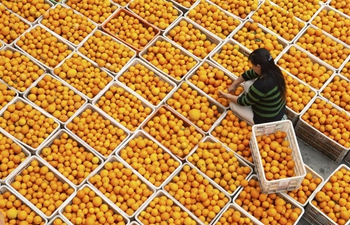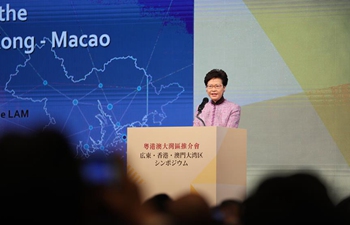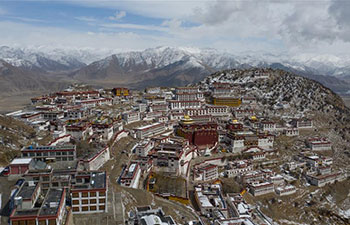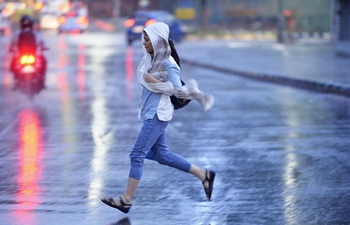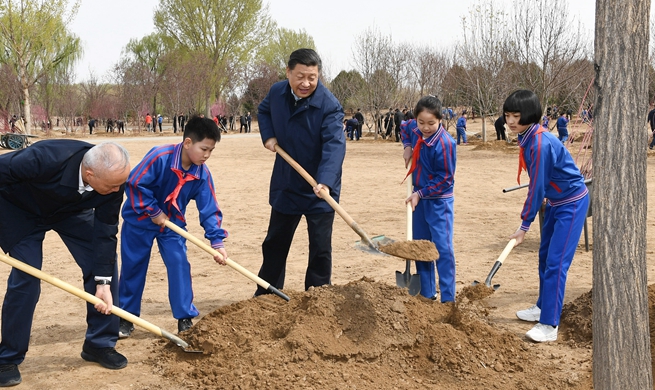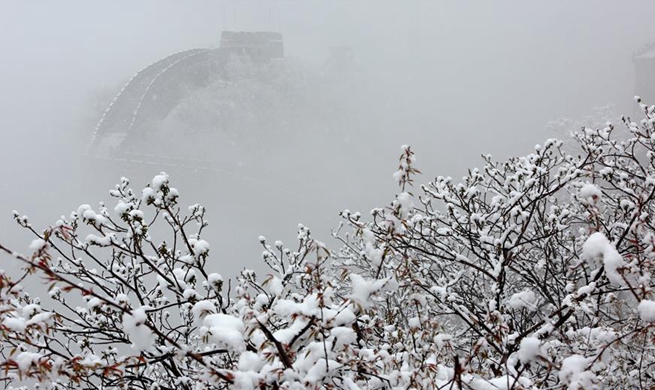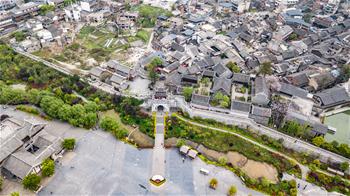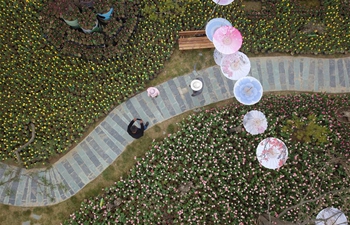TIANJIN, April 10 (Xinhua) -- Several roughly textured pink-red lychees and a fresh multi-layered cabbage are packed tightly with other vegetables and fruits in a basket.
Upon first glance, you might be tempted to grab one and eat it, but you'd regret that decision.
All these vivid objects are sculptures made of various colorful fabrics, which were created by Chang Cheng, 66, a folk artist in northern China's Tianjin Municipality.
His works cover a large number of topics ranging from flowers, birds and fish even to figures such as Queen Elizabeth II and Leonardo da Vinci's Mona Lisa.
"Textile art is not uncommon, but I want to give new life to the novel art of textile sculpture," Chang said.
Born in 1953, Chang always accompanied his mother to buy cloth when he was young. He stood on his tiptoes to peep the small colorful world of the cloth shop. When pieces of cloth fluttered in the wind, an unraveling picture appeared in Chang's mind.
"Since gray, black and dark blue were the popular clothes colors at that time, I was eager to seek change and buried a dream in my heart -- being a tailor," Chang said.
At the age of 30, he could skillfully operate a sewing machine and make clothes. After cutting, sewing and ironing, all kinds of fabrics became sets of fashionable garments under Chang's hands.
Noticing the remaining piles of obsolete fabric on the ground, Chang came up with the idea of making textile sculptures.
In 2002, Chang walked through street after street to find over 400 suitable fabrics to make 100 child sculptures. He bore in mind the physical characteristics of each fabric like its texture, elasticity and toughness.
"The fabric I choose must be in accordance with the objects I create. Then by making samples and constantly adjusting them, I can finally determine the most suitable fabric and the way of sewing," Chang said.
With the eligible materials, Chang started to design two-dimensional drawings for each child model. Their costumes, accessories, and even shoes should be carefully designed.
To make different clothes and accessories for each child, he sewed hundreds of samples that could fill up several suitcases.
A child textile sculpture requires more than 100 steps to make, such as selecting the matching threads, determining the stitch of fabrics, and stuffing it with cotton.
Chang even starched a few strands of silk threads after unravelling them from a piece of black fabric and sewed them on the scalp of sculptures' heads, looking like real black hair.
In Chang's work, two or three children form a group, with various postures and expressions on their faces. Some play trumpets, while others set off firecrackers.
"When I saw the 20-meter-long finished work, I was too excited to fall asleep," Chang recalled.
Two years later, this masterpiece was exhibited at a folk art fair. "I was delighted to see many people gathering here and taking pictures," Chang said, adding that this work brought him many awards.
Chang, an inheritor of the intangible cultural heritage in Tianjin's Hexi District, has become a teacher in several universities since 2005 to share his experience of making textile sculptures.
"I use fabric to create lives. Textile sculpture is my lifelong career, and I will strive to design and create new works for the rest of my life," he said.




